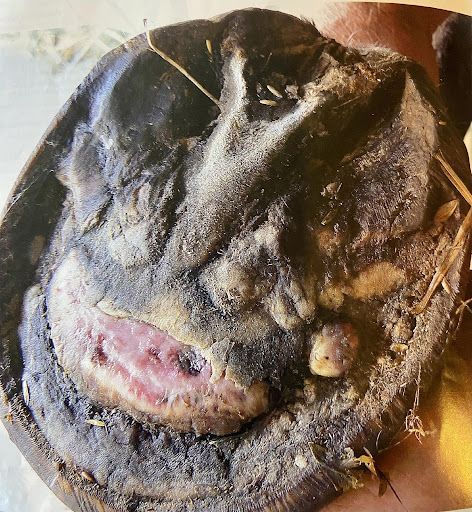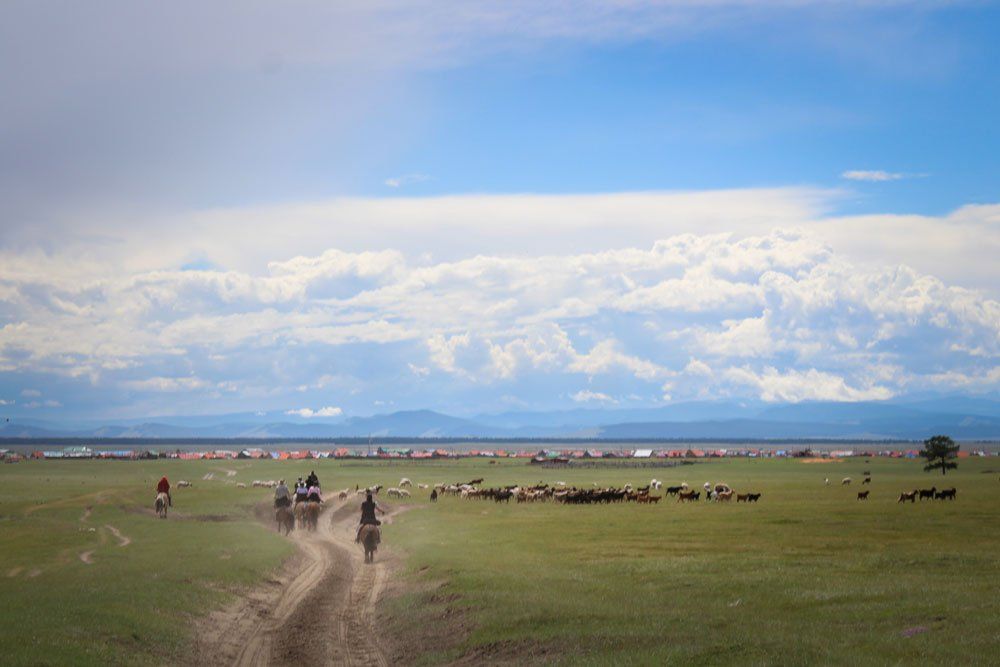MONGOLIA ON HORSE BACK
Wild About Hooves • 27 July 2017
What an ADVENTURE! Mongolia is the wild west of the east.
I cried when I farewelled my Mongolian steed. I wanted to bring him home.
These wild eyed, dreadlocked, pocket rockets were the highlight! They carried us 400kms across remote northern Mongolia in true nomadic style, across the steppes, through swollen rivers, mountain passes and rocky trails into swallow-you-whole boggy marshes to the Tsaatan – Reindeer people camped near the Russian border. Then they marched us back to a local Naadam Festival with horse racing, wrestling and archery. Chinggis Khann stated “It’s easy to conquer the world from the back of a horse” and it’s easy to see why. These horses were missiles for this legend in the 13th century. They carried the conquering Mongol warriors across half the world.
Super short, super tough, surefooted, self sufficient, heavy duty creatures, they never tired, hardly sweated, didn’t smell like a horse, and would lock into together like a jigsaw when you felt like re-enacting a battle scene, or if the weather turned nasty or if you just needed to pass a hip flask of vodka.
I fell head over heels with my little grey, 13 hand high chaperone. At the horse induction part of the tour, I pleaded for a quiet horse as I aspired to be the chief photographer of our group. This got confused in language translation that I was the quiet one in the group, obviously suited to the horse that had to have his front legs hobbled and his hind legs tied to get the saddle on.
I prayed I would be safe. How bad could he be? He was tiny. The size of a pony.
Well wishers had offered me a advice tips before I left Australia.
- Don’t Pat the Horses Necks
- Don’t Pull out Your Raincoat When Your Onboard
- Don’t Approach Them From Behind
- Don’t Approach Them From the off Side
- Don’t Pick up Their Feet
- Don’t Make Sudden Noise Like Coughing, Sneezing, Burping or Clicking Your Camera
I proceeded to tip toe around my horse and hoped for the best. But I found his favorite itchy spot. For me, it was the moment we became friends.
Mongolians do not share the same adoration for horses as we do, They are considered like a car. They do not name their horses. They call them by their colour and they have a few different ways to describe the subtleties of colors in their horses.
I called mine “Smokey Jo Fish Eater” and as the endurance riding holiday progressed he became “Smokey Jo Kilometer Cruncher”.
The tack is very basic essentially a bridle and a wooden based saddle on top of three saddle felt pads. They were very stable and surprisingly comfortable, and allowed maximum freedom of movement for the horses.
Their hooves are tough and a horse shoe was not to be seen. There was no sign of hoof care either but these horses are the billboard for Natural Hoof Care.
Their hooves are no fuss, they self trim with the environment and the constant movement. Because they are allowed to live much the same as a wild horse, they require very little in the way of hoof care.
They are surefooted. They move carefully through challenging terrain and never seem to fall down the every-where-you-look marmot holes.
When we are teaching, we constantly highlight the simplicity of hoof care. Movement, the horses living environment and its’ diet are the keys to success with sound, happy, healthy horses.
Mongolian horses emblazoned the natural hoof care mantra.
Horses are at the core of Mongolian culture. The horse population of 3 million outnumbers the country’s human population. There is a horse for every Mongolian. Everyone can ride.
“A mongol without a horse, is like a bird without wings.”
To appreciate the Mongols you need to see them on horseback. Its breathtaking to see them tearing across the valleys.
Sometimes it’s kids two astride a horse, flying along laughing, loose bridle, bareback with perfect balanced seats. It’s their way of life.
Mongolia is one of the few places on earth where the nomadic lifestyle is still practiced and its worth watching the herdsman work with their animals.
Mongols are the most welcoming, generous people. To experience their hospitality, when you spot a Ger during your travels, simply ride over and call in. You can always count on a salty milk tea and warm hospitality.
This awe inspiring, vast country stretches for miles in every direction. There are no fences, no boundaries, no “keep out” signs. In fact the country is pretty much public property. So different to our culture where we consider it creepy for a stranger to invite you into their house.
When it came to saying goodbye to Smokey Jo, I hatched a plan to ride all the way down to Singapore and fly him home as it’s against the law for the native horses to leave Mongolia.
That was until, he looked me deep in the eyes.
His look summed it all up – his indomitable spirit, his national pride and his importance at the core of Mongolian culture.
“Mongolia is my home”. He winked.
I sobbed into his dreadlocked mane and thanked him for a truly special ride.
A popular Mongolian saying “A smooth running horse is an instant faster than a mans thoughts and a nose ahead of the swirling wind”

Laminitis kills thousands of horses every year, and leaves thousands of others debilitated with lameness. It will and can affect any horse. And for you, the horse owner it can be devastating: you feel guilty and heartbroken at your horses suffering, confused with all the information as it is typically explained by professionals in scientific terms that can be difficult to understand, costly veterinary bills and you have the major task of nursing your horse back to recovery. . Unseasonal weather patterns around Australia with abundant rain and sunshine saw laminitis at a near epidemic last year. The reason being, that the environmental conditions can trigger increases in the sugar, starch and fructan. These collectively known as non-structural carbohydrates can cause laminitis in any horse or pony. Alarm bells ring this spring!! Be warned and be prepared, for prevention is better than cure.

The extraordinary relationship between humans and the horse has been running since before the birth of Christ. Indeed, there is evidence our domestication of horses goes as far back as 3500 BC. And ever since we recognised the utilitarian value of the horse, there has been the horseshoe. The use of horseshoes has become an almost unquestioned tradition. Humans have been nailing shoes onto horses’ hooves for well over a thousand years. Who can remember back to a time otherwise?













